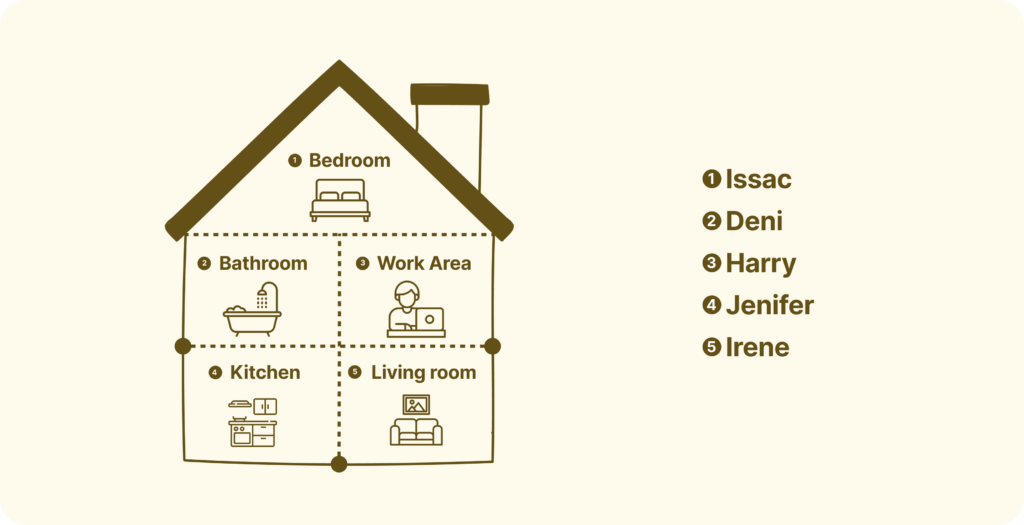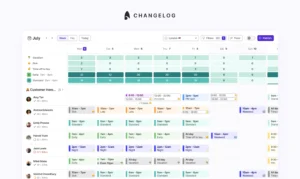
Top 5 customer service games to improve your CX team

Picture this — you want to train your customer service team. But learning is tedious and exhausting, they say. Too many concepts to grasp and remember! Hours of sleep-inducing content to consume!
How do you make it fun and engaging? How do you prepare them for demanding customers and crises?
Introduce customer service games in your training program.
So, let’s begin with understanding the importance of training and then we’ll suggest customer service games and tips to improve your teams.
Why is customer service training important?
Customer service training is important because it helps your surfers (agents) prepare for customer calls or an unforeseen crisis. It enables them to provide better service and create positive customer experiences.
Here are some facts that support our claim.
- Engaged learners are more likely to say – learning helped them grow in the role, achieve their goals, and adapt to changes.
- Over 60% of customers have increased their service standards which is why training is important.
- 86% of service agents think customers are more intelligent and need knowledgeable agents.
You can only satisfy the increasing customer expectations and demand by training your surfers to serve them well. Since your customer service team stands in the frontline and interacts with customers the most, you must teach them to convert customer conversations into revenue-generating channels.
So, what are the most effective and engaging ways to train your surfers? Let’s take a look.
Top 5 customer service games to improve CX teams
Here are the most popular customer service games to train your surfers and ensure better customer experience.
1. Role plays
Roleplays are the epitome of the learning-by-doing theory. Your surfers will understand how to handle customers better when they have first-hand experience with such situations.
Role plays involve demonstrating scenarios where customers can be difficult, and surfers need empathy to understand their problems. And this is just one situation; you can collect multiple cases of customer complaints and show your surfers how to respond with roleplays.
Your team can enact these scenarios by forming groups of 2 (1 disappointed customer + 1 surfer) while others review their performance, ask questions, and give feedback.
Here are a few examples to help you conduct role plays for your team — Call centre roleplays.
“Name” game
The “name” game or memory palace is one of the popular customer service games to improve memory. It aims to relate peoples’ names with rooms in a memory palace.

How to play?
- Form groups of surfers who haven’t known each other for long.
- Ask them to think of their memory palaces (this could be the surfers’ home, school, or hostel) and associate each room of the memory palace with a surfer’s name.
- Ask them to walk through that memory palace and call out each name.
This will help them remember all the names. Once done, ask your surfers to start addressing each other by names and check if they played the game well.
Say “Yes, and…”
This game aims to make customers look good, regardless of their faults.
For example, when a frustrated customer calls a surfer for assistance, they don’t want to know if it’s their fault or the product’s. They make absurd requests, and your surfers’ job is to say “yes” and proceed with the resolution.
How to play?
- Give a customer complaint prompt to a group of 4-5 surfers.
- Keep the condition that surfers cannot say “no” to other participants’ requests.
For example, if one participant says, “Can I have your car ?” the surfer can’t say no 😉. Instead of denying it, they should improvise and suggest another solution – “I can give you a ride, instead.”
Saying “yes” and improvising the conversation helps agents create unique responses to weird and complicated customer requests.
2. The telephone game
Develop your team’s listening skills with the telephone game. Popular as Chinese Whispers, this game prepares your surfers to be active and attentive listeners. This allows surfers to understand problems in the first interaction without asking questions.
How to play?
- Get 10 people standing in a queue.
- Whisper a message to the first person in the row and ask them to pass it on to the next person.
- Let it go on until the message reaches the last surfer.
- Ask the last one to repeat the message. More often than not, the statement turns out to be completely different from the original one.
Here’s where your team can practise active listening — paying attention to the person’s words even when they speak extremely low.
3. Dumb charades
Dumb charades help your surfers learn the skill of asking the right questions by understanding the customer’s silence. It addresses the challenge of not seeing the customer while talking over a call or live chat.
How to play?
- Divide your team into two groups with an equal number of participants.
- Ask every team to find some words related to your company/industry.
- Let one team member whisper the word to the other team’s participant.
- The participant then enacts the word to explain it to their team.
- The actor’s team can ask questions based on the participant’s actions to understand the word better.
This customer service game develops critical thinking abilities in your surfers and prepares them to extract the right information from customers.
4. Jeopardy
Jeopardy helps surfers recall and revise the concepts learned during training sessions. Unlike other quizzes with trivia questions, Jeopardy challenges a person to come up with the correct answers while also predicting how their competitors play.
The best part — the answers have to be in the form of questions!
How to play?
- Call 3-4 contestants each for every round of Jeopardy.
- Give them a buzzer or a bell to signal when they want to submit their answers.
- Ask them questions that are answers for which the participants will frame questions.
For example ⬇️
Question: Can I put your call on hold for a minute?
Answer: What do you ask a caller before placing them on hold?
You can decide 5-6 categories based on which you’d like to train your surfers. These categories include customer service skills, industry-relevant topics, call etiquette, or product/service information. The more topics you add, the more educational and diverse the game turns out.
5. Crisis communication exercise
Surfers may often fail to keep calm during their customer interaction. That’s where crisis communication exercises help them prepare for the worst.
How to play?
- Give the surfers a crisis prompt.
- Ask them to suggest at least 3 appropriate responses to handle the situation.
It will train them to brainstorm creative solutions during actual crises.
Talking of crises, you can avoid them as much as possible with a scheduling software.
For instance, you can use Surfboard’s shift forecasting to determine the number of surfers you’d need 3 months in advance. The platform uses historical data from your ticketing system to predict the number of tickets you’ll get during a particular occasion.
Based on this number, you can get the accurate staffing levels to ensure you never face a workforce crisis during peak times. You can even customise these forecasts based on your requirements and predictions of the crisis.
In addition to the customer service games to train your surfers, here are the best ways to improve your customer service team’s productivity.
Top 3 tips for an efficient customer service team
Set up KPIs to measure your team’s performance
Define KPIs to track and measure your surfers’ performance regularly. These metrics will help you analyse the impact of your customer service games for training surfers.
Here are a few KPIs you can track to analyse customer service performance ⬇️
- Average Resolution Time (ART)
- Customer Satisfaction Score (CSAT)
- First Contact Resolution (FCR)
- Occupancy rate
- First Response Time (FRT)
You can add more KPIs based on your training goals and target customer service skills.
Automate customer service processes
20% of customer care leaders in call centres keep automation at the forefront of their investments. Why? Because good customer service needs an intelligent combination of human brains and AI.
With automation, you can free up your surfers and assign them smarter tasks while AI handles mundane activities. You can automate internal processes like ticket routing, workforce scheduling, shift planning, and responding to basic customer queries (using Chatbots).
💡With automated scheduling software, you can reduce 80% of the time spent creating spreadsheets and manually informing surfers about their daily activities.
Use Surfboard to distribute tasks
Work overload and lack of adequate breaks between shifts are the primary reasons behind the drop in your CX teams’ productivity. Therefore, how you distribute tasks and plan surfers’ shifts needs a revamp.
Before assigning tasks, consider your team members’ availability, preferences, and expertise. The best way to do this is by using Surfboard to create customisable schedules for your team.
Surfboard integrates scheduling software capabilities with forecasting and shift planning to help you improve your customer service teams.
It is a customer support scheduling software to enhance your team’s productivity, avoid no-shows and last-minute cancellations, and streamline team scheduling.
Here’s how Surfboard can help you ⬇️
- Forecast your staffing requirements
Use your historical ticket data to predict inflow and understand how many surfers you need 12 weeks into the future.
- Plan your team’s shifts with intuitive shift planning
Avoid SLA violations with Surfboard’s customisable shift planning. Build shift plans and patterns from scratch based on the unique needs of your team and automatically assign shifts in advance.
- Schedule and delegate your team’s activities
Give Surfboard your scheduling rules and priorities and automate your scheduling across days, weeks, and months.
- Integrate Surfboard with existing systems
Connect HRIS, CRM, payment & billing, and time-off systems with Surfboard to provide internal visibility to your teams.
Surfboard seamlessly integrates with popular platforms like Zendesk, Salesforce, Slack, Twilio, and more.
- Create custom shift patterns
Build shift patterns based on your team’s needs, including rotating shifts and round robins. You can also build different shift plans for specific campaigns, sales, and more.
💡Want to learn more about Surfboard?
Here’s how Surfboard helped Wolf & Badger streamline their shift scheduling across time zones⬇️
Wolf & Badger automated workforce scheduling with Surfboard to streamline activity distribution, shift scheduling across time zones, and cover their expanding customer base.
Surfboard’s shift rotation feature helped the company manage three different shift timings, covering weekends and extra slots in physical locations.
Besides this, Surfboard’s capability to import calendar events and provide Team Views saved Wolf & Badger time, made it more efficient, and streamlined their operations.
Book a demo with Surfboard today to streamline workforce scheduling, forecasting, and planning like Wolf & Badger!
FAQs
How to make customer support fun?
Here are some tips to make customer support fun ⬇️
- Encourage surfers to engage in informal conversations with customers.
- Guide your surfers to go with the flow when customers become comfortable with them.
- Describe situations where surfers can make fun of themselves to ease the customer’s mood, provided they’re not fuming.
How to create a customer service training program?
Create a customer service training program in 5 steps:
- Assess your team’s performance and determine the skill gaps.
- Create a budget for customer service training and include as many free resources and gamification modules as possible.
- Invest in a Learning Management System (LMS) to streamline training.
- Select the proper training structure — in-house, outsourced, online, or workshops.
- Determine key metrics to measure the training performance.
What are 3 key customer service activities?
Three key customer service activities include ⬇️
- Responding to customer queries
- Resolving customer issues (technical/non-technical)
- Managing customer complaints



